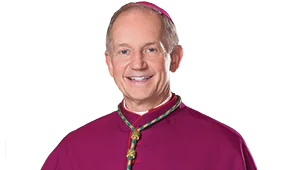
Bishop Thomas John Paprocki | Diocese of Springfield
During the Catholic Mass, a specific ritual takes place during the fraction rite, where the priest breaks the consecrated Host and drops a small particle into the chalice containing the Precious Blood. At this moment, he quietly says, “May this mingling of the Body and Blood of our Lord Jesus Christ bring eternal life to us who receive it” (Roman Missal, 2011). This action is known as commingling.
Father Aloysius Okechukwu Ndeanaefo, pastor of St. Mary Parish in Paris, explained that commingling has theological and symbolic meaning. “It primarily signifies the unity of Christ’s Body and Blood, which were separated in death and are now gloriously reunited in His resurrection. Although Christ is fully present under both Eucharistic species, the separate consecration of bread and wine highlights His sacrificial death, while the mingling of the Host and the chalice visibly affirms the living and resurrected Christ (General Instruction of the Roman Missal, 2011, §83).”
The tradition also has historical roots. “Historically, this practice symbolized the unity of the universal Church, especially ‘in diebus illis’ (in those days), when a fragment of the bishop’s Host was sent to be mingled with the chalice of priests in other churches (fermentum). While that practice has ceased, the commingling still conveys unity — not only within Christ’s real presence but among the faithful who share in His sacrifice. Theologically, it reinforces the idea that the Eucharist is both a memorial of Christ’s Passion and a celebration of His risen life (Catechism of the Catholic Church, 1997, §§1362–1372). Meanwhile, the Lamb of God is sung or said during this action, highlighting Christ as the sacrificial Lamb.”
Father Ndeanaefo concluded his explanation with blessings for those interested in learning more about this part of Catholic liturgy.





 Alerts Sign-up
Alerts Sign-up